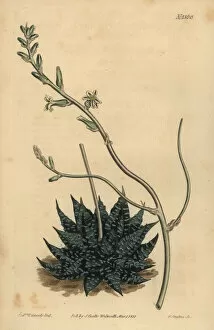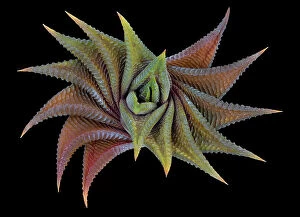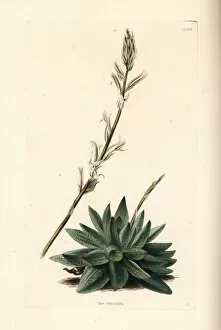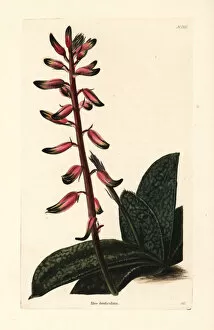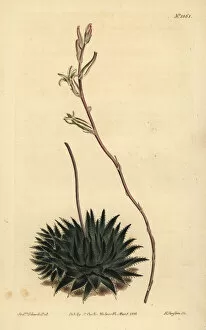Haworthia Collection
Discover the enchanting world of Haworthia: a diverse genus of succulent plants, native to South Africa
For sale as Licensed Images
Choose your image, Select your licence and Download the media
Discover the enchanting world of Haworthia: a diverse genus of succulent plants, native to South Africa. With their unique and intriguing forms, Haworthia minor and Tulista minima boast delicate, rosettes that resemble tiny, star-shaped lanterns. Haworthia limifolia, also known as the "string-leaved Haworthia," showcases thin, ribbon-like leaves. Haworthia reticulata, with its reticulated leaf edges, adds a textured element to any collection. A flowering Gasteria plant, often mistakenly identified as a Haworthia, adds a splash of color with its bell-shaped, tubular blooms. Haworthia pumila, or dwarf Haworthia, is a low-growing, compact plant with tiny, translucent rosettes. Haworthia mirabilis, with its vibrant, red edges, brings a pop of color to the collection. Haworthia venosa, or veined Haworthia, showcases intricate, veined leaves. The Hankey dwarf aloe, or Haworthia attenuata var. Radula, is a rare and highly sought-after variety, with its unique, spoon-shaped leaves. Haworthia viscosa, or sticky Haworthia, is covered in a sticky substance, providing protection against predators. Lastly, Haworthia herbacea, or the green Haworthia, is a hardy, easy-to-care-for species, perfect for beginners. Each Haworthia species offers a unique charm, making them a captivating addition to any succulent garden.

